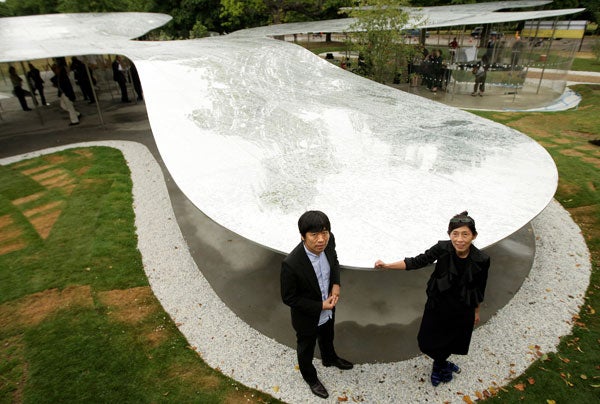Observations: Sanaa reaches peak critical acclaim after 15 years

This week, Sanaa, aka the Japanese architects Kazuyo Sejima and Ryue Nishizawa, won their profession's Oscar, the $100,000 Pritzker Prize. It's either an extraordinary achievement, or just a sign of our age of cultural velocities, that this design partnership has reached peak critical acclaim after only 15 years. It took Fumihiko Maki, one of Japan's other two Pritzker laureates, decades to get the gong. Ditto the godfather of baroque modernism, Oscar Niemeyer. Even Rem Koolhaas, already a legendary architectural manifesto machine in the early 1970s, had to wait more than 25 years to be anointed.
This is not to criticise Sejima and Nishizawa, for they are surely unique in subjecting modernism's most famous maxim, "less is more", to the most intensely rigorous dematerialisation. Their architecture, as the Pritzker citation rightly says, "stands in direct contrast with the bombastic and rhetorical. Instead, they seek the essential qualities of architecture that result in a much-appreciated straightforwardness, economy of means and restraint in their work."
And in their utterances. Sejima and Nishizawa are famous for saying very little. Witness the too-carefully staged question-and-answer session at the opening of their delightful Serpentine Pavilion in London last summer. Under that wafer-thin, magically lucent and polished aluminium roof, scripted questions induced excruciatingly leaden answers at best. Buildings such as the O-Museum in Nagano, Japan, the 21st Century Museum of Contemporary Art in Kanazawa, the Glass Pavilion at the Toledo Museum of Art in Ohio, and the New Museum of Art in New York demonstrate that the key words in their architecture are inclusion and transparency. In essence, it's about removing visual and programmatic barriers. Sanaa's most recently completed building, the Rolex Learning Centre in Lausanne, carried this to an almost hallucinatory conclusion.
Sejima and Nishizawa are pioneering an architecture of open, rather than densely reasoned relationships with people and surroundings. Which reminds me – memo to Julia Peyton-Jones, director of the Serpentine Gallery! Madame, as you've chosen Jean Nouvel to design this year's Pavilion, may one request that a) there be no scripted Q&A b) that the convivial M Nouvel be equipped with a tidal flow of half-decent Pouilly-Fuissé; and c) that a freewheeling conversation, with much glass clinkage, be allowed to take place.
Subscribe to Independent Premium to bookmark this article
Want to bookmark your favourite articles and stories to read or reference later? Start your Independent Premium subscription today.

Join our commenting forum
Join thought-provoking conversations, follow other Independent readers and see their replies